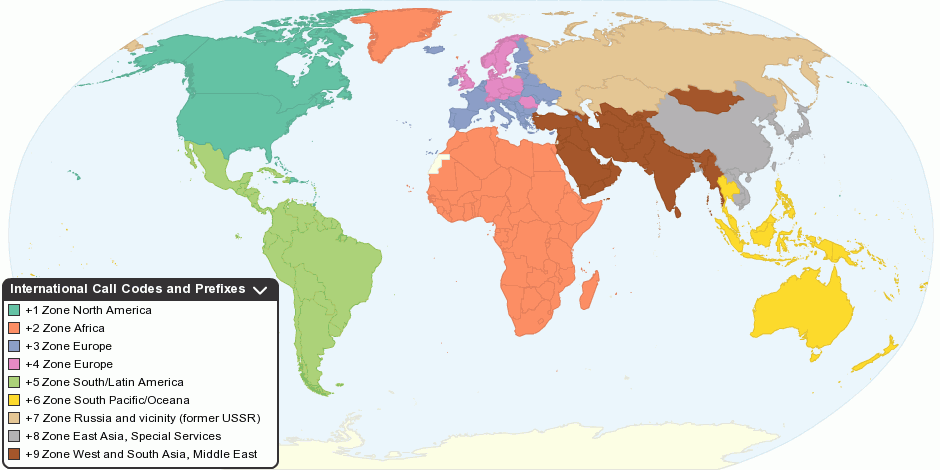This map shows list of country calling codes defined by International Telecommunication Union (ITU), also called International Direct Dialling (IDD) or International Subscriber Dialling (ISD) codes. The table below will help you find the dialing codes you need to make long distance phone calls to friends, family, and business partners around the globe.
The list contains the country code, the international prefix, the national (trunk) prefix and the national (significant) number in accordance with ITU-T Recommendation E.123 and E.164.
The country code is composed of one digit or is the combination of two or three digits, characterizing the called country which is used to route calls to the required country. It is usually dialled after the international prefix. Generally, as in the list below, the need for this prefix is indicated with a "+".
The international prefix is the digit, or combination of digits, such as "00" or "011", that must be dialled before a country code when dialling a call to a country other than the one from which the call is being placed. If the entry in this column is blank for a particular country, it means that the country does not have direct dialling facilities to other countries (in other words, international calls must be placed through the assistance of an operator).
The national (trunk) prefix is the digit, or combination of digits, which must be dialled before an area (city) code when dialling a call to a subscriber from inside his own country but outside his own numbering area. It provides access to the automatic outgoing trunk equipment. If the entry in this column is blank for a particular country, it means that the country has a single nationwide numbering plan that does not use area codes, and all calls to anywhere in the country are dialled by using the entire local number.
15 years ago

